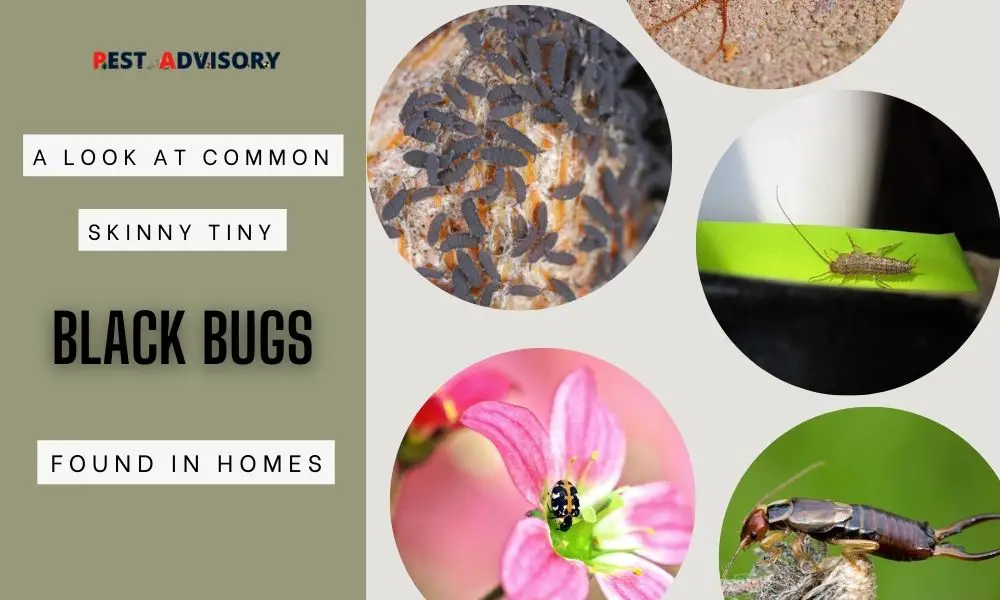You’re definitely not alone if you’ve ever witnessed a small, black, and slender beetle racing across your floor.
These unpleasant bugs are ubiquitous in many houses, and despite their little size, they can cause major troubles.
We’ll take a deeper look at some of the most frequent thin little bugs seen in homes, the risks they bring, and what you can do to prevent and treat infestations.
Common Long Skinny and Tiny Bugs Found in Homes
Ant
Size: 1/16″ to 1/8″
Shape: Segmented, oval
Color: Brown or black
Lifespan: Workers live about two to three years
The ants commonly found in homes are known as pavement ants, and they belong to the species Tetramorium caespitum.
They are typically small, measuring 1/16″ to 1/8″ in length, with a segment oval form and a brown or black color.
Workers of this species typically live for two to three years.
Pavement ants like to reside in cities, where they make nests in sidewalk cracks, driveway gaps, and building foundations.
They are attracted to sweet and greasy foods, making kitchens and pantries their favorite spots in homes. Crumbs, spills, and improperly stored food attract them to the house. And to get rid of ants can become a daunting task.
Pavement ants prefer cities, where they establish their nests in pavement cracks, road gaps, and structure foundations.
Homeowners may notice an increase in their activity during these seasons.
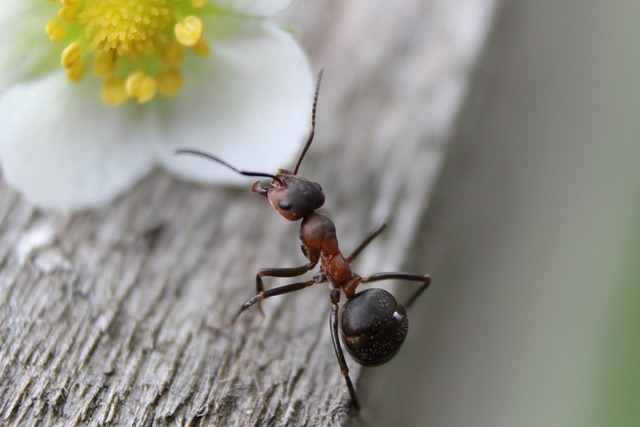
Silverfish
Size: About 12mm in length.
Shape: Long, slim, scaly, and segmented body.
Color: Silvery light grey color.
Lifespan: Two to eight years.
Silverfish are small, wingless insects that belong to the order Zygentoma.
They are commonly found in homes and are known for their silvery light grey color, and long, slim, scaly, and segmented body, which measures about 12mm in length.
Silverfish have a life expectancy of two to eight years, that depends on the surrounding they live.
Silverfish love warm, humid places like bathrooms, kitchens, and basements, and they are prevalent in homes.
They feed on starchy substances such as books, paper, cardboard, wallpaper, and clothing, and they are attracted to homes that have these items.
During the summer months, silverfish activity in homes increases due to the warm and humid weather.
They can even be found during winters when the heater is turned on to balance the temperature outside and the air is dry.
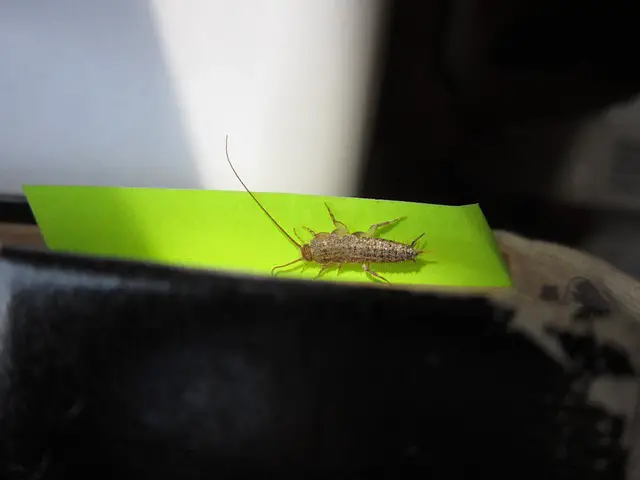
Carpet beetles
Size: Adults vary in size from 1/16 to 1/8 inch.
Shape: Oval shape
Color: Dark brown to black in color. However, some species may have mottled patterns of white, brown, yellow, or orange.
Lifespan: Adult carpet beetles live for several weeks to a couple of months.
Meanwhile, the larvae will live and feed for a period of 7-10 months before turning into pupae.
Adult beetles will emerge approximately one month later and will normally only live for a period of 2-6 weeks.
Carpet beetles are long skinny common household pests that are often found in homes across the world. These tiny insects have an oval form and are petite, varying in measurement from 1/16 to 1/8 inch.
They can range in color from dark brown to black, with some species having mottled patterns that are white, brown, yellow, or orange.
Adult carpet bugs have a relatively brief lifespan, lasting a few weeks to just a couple of months.
Meanwhile, the larvae will survive and eat for 7-10 months before becoming pupae.
Adult beetles will emerge approximately one month later and will normally only live for a period of 2-6 weeks.
Rug beetles can be encountered in a wide range of environments, including residences, museums, and other structures.
They are drawn to a wide range of organic materials, such as wool, silk, fur, feathers, and animal goods. They may also feed on plant materials, such as cotton and linen.
A range of conditions, including warmth, moisture, and the existence of sufficient food supplies, attract carpet beetles to homes.
They may also be attracted to homes by the presence of other pests, such as rodents, which can provide a source of food for the long skinny beetles.
They are the most active during summer and spring when the weather is hotter.
During this time, they may become more active and may be more likely to infest homes and other buildings.

Booklice
Size: 1 to 2 mm or less in length.
Shape: They have a soft-bodied and distinctive bulgy clypeus, an area above the mouthparts.
Color: Cream or light brown.
Lifespan: Adult Booklice can live for six months and produce two generations per year.
The entire life span from egg to adult is between 30 and 60 days. The adult female can lay up to 100 eggs that take 2-4 weeks to hatch into nymphs. The life cycle from egg to nymph to adult takes 2-3 months.
Booklice, also known as psocids or barklice, are small, soft-bodied insects that measure between 1 to 2 mm or less in length.
They have a distinctive bulgy clypeus, an area above the mouthparts, and their body is divided into three distinct parts: head, thorax, and abdomen.
They are usually cream or light brown in color.
These tiny insects are common in homes and can be found in various areas such as closets, bookshelves, attics, and basements.
They prefer warm, humid environments and can be attracted to moldy or damp areas.
They feed on a variety of organic materials such as fungi, algae, dead insects, and even book bindings.
Booklice can survive for up to six months and produce two generations per year. The entire life cycle from egg to adult takes between 30 and 60 days.
The adult female can lay up to 100 eggs that take 2-4 weeks to hatch into nymphs. The life cycle from egg to nymph to adult takes 2-3 months.
The activity of booklice usually increases during the summer and spring when the weather is warmer and more humid.
Homeowners can prevent booklice infestations by reducing humidity levels in the home, fixing any water leaks, and ensuring proper ventilation.
Regular cleaning and decluttering can also help eliminate potential food sources for booklice.
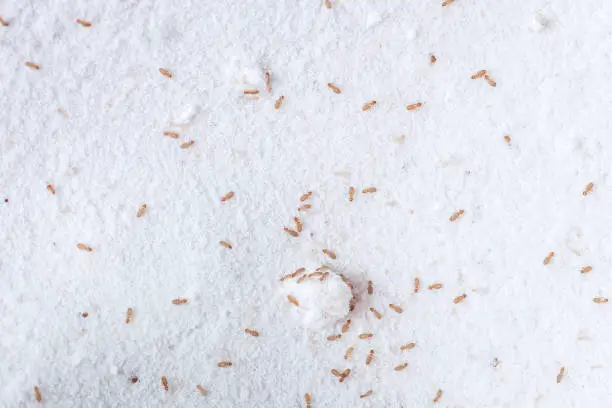
Springtails
Size: Less than 2 mm in length (0.04 to 0.1 inches).
Shape: Slender and elongated body.
Color: Dark-colored, brown, grey, or black. Some species may be white and some are even brightly colored.
Lifespan: 3 to 5 weeks after hatching, depending on the viability of the surrounding environment.
Springtails are tiny arthropods that are commonly found in homes. They are typically less than 2 mm in length (0.04 to 0.1 inches), with a slender and elongated body.
Their color varies from dark colored, brown, gray, or black. Some species may be white, and some are even brightly colored.
Springtails have a lifespan of 3 to 5 weeks after hatching, depending on the viability of the surrounding environment.
Springtails are attracted to areas with moisture and organic matter, such as damp soil, leaf litter, and decaying wood.
They frequently appear in homes, particularly in bathrooms, kitchens, and basements.
They eat algae, fungi, and other organic debris but are not dangerous to humans or pets.
Springtails also are more active in the spring and summer while the climate is warmer and more humid. They can, however, be found in homes all year.
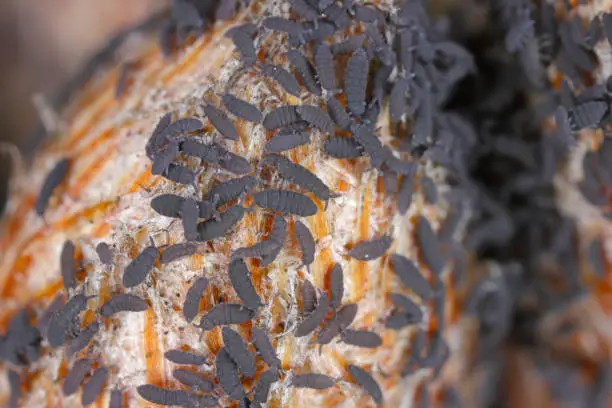
Mites
Size: Most mites are visible to the unaided eye and usually measure 1⁄8 inch or less in length.
Shape: Some mites are club-shaped or sensory, while others have an elliptical shape.
Color: Most mites appear tan, brown, or reddish-brown, but some species are bright red, blue, or green in color.
Lifespan: The lifespan of a mite varies between species. The total lifespan of a Demodex mite is several weeks, while the Psoroptes mite has a lifecycle of 10 days. The life cycle length of a mite is approximately 3 weeks on average.
Mites are small arachnids that are commonly found in homes. Common types of mites are dust mites and spider mites.
Dust mites are tiny and measure about 0.3 millimeters in length. They are oval-shaped and have a white or translucent color.
Their lifespan is approximately two to three months. They feed on dead skin cells and are attracted to homes with high humidity levels.
The length of spider mites is 0.5 mm which is comparatively larger than dust mites. They are oval in shape and are seen in colors like brown, red, and green.
Their lifespan is about one month. Spider mites are attracted to houseplants and can be found in gardens or indoor plants. They feed on plant sap and can cause damage to the plants if left unchecked. So it’s better to get rid of spider mites from house plants.
Scabies mites are barely visible to the naked eye, measuring about 0.4 millimeters in length. They are oval-shaped and have a gray or white color.
Their lifespan is about one month. Scabies mites are attracted to warm and humid environments and can be found in bedding, clothing, and furniture.
They feed on human skin and can cause scabies, a skin condition that causes intense itching.
The activity of dust mites tends to increase during the winter months when homes are sealed up and humidity levels are higher.
Spider mites tend to be more active in the summer months when plants are growing rapidly.
Scabies mites are present year-round but can become more active during the fall and winter months when people spend more time indoors.
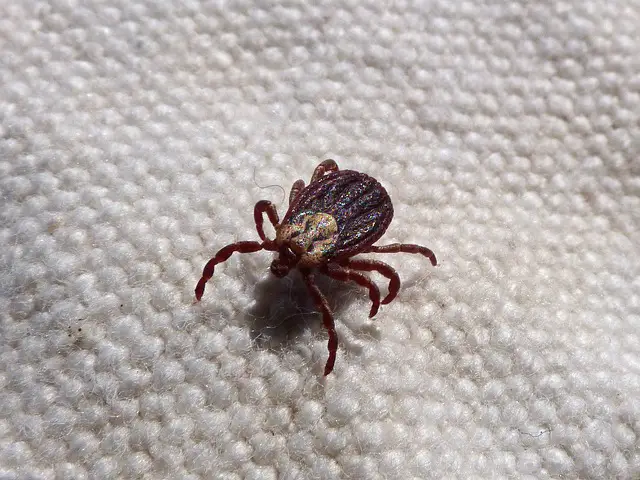
Gnats
Size: 1 to 13 mm
Shape: Long, slender, and oval.
Color: Mostly black in color, though they can also be gray.
Lifespan: Gnats live an average of 5 to 10 days, with adults depositing eggs on moist soil or decaying organic matter. Females lay up to 100 to 300 eggs in batches of 2 to 30 each. The eggs hatch in 4 to 6 days, larvae feed for 12 to 14 days, and the pupal stage is about 5 to 6 days.
Gnats are small, flying black bugs that belong to the family Sciaridae. They are commonly found in homes and can be a nuisance to homeowners.
Gnats are typically 1 to 13 mm in size and have long, slender, and oval-shaped bodies. They are mostly black in color, although they can also be gray.
Gnats have a short lifespan, living an average of 5 to 10 days. Females deposit eggs on moist soil or decaying organic matter.
They lay up to 100 to 300 eggs in batches of 2 to 30 each. The eggs hatch in 4 to 6 days, and the larvae feed for 12 to 14 days. The pupal stage lasts about 5 to 6 days.
Gnats can be found in many areas of the home, including bathrooms, kitchens, and basements.
They are attracted to moist environments and decaying organic matter. Gnats feed on fungi, bacteria, and other small insects.
Gnats are commonly attracted to overripe fruit, spilled juice, and other sweet, sugary substances.
Gnats are most active during the warm months, typically from spring to fall. Their activity increases in the house during the summer months, as they are attracted to the warmth and moisture of indoor environments.
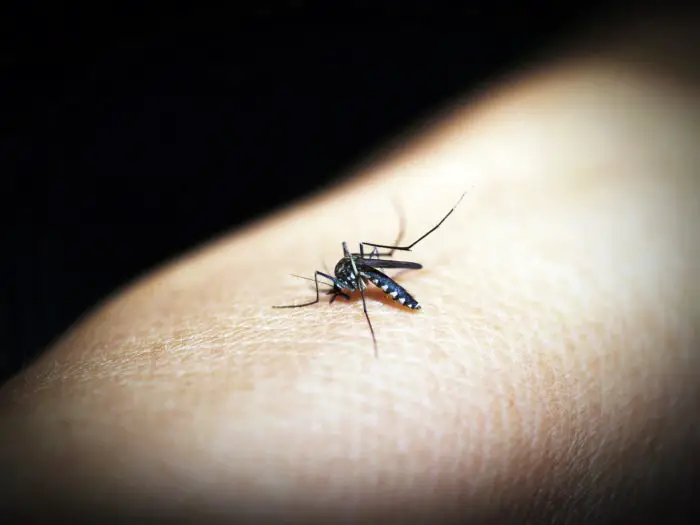
Thrips
Size: 0.5 mm to 15 mm in length but most species are shorter than 5 mm.
Shape: Distinctive cigar-shaped body.
Color: Range from translucent white or yellowish to dark brown or black.
Lifespan: 2-6 weeks under good conditions.
Thrips are tiny, cigar-shaped insects that are typically 0.5 mm to 15 mm in length, with most species being shorter than 5 mm.
They are characterized by their distinctive shape and can range in color from translucent white or yellowish to dark brown or black.
Thrips have a lifespan of 2-6 weeks under good conditions.
Thrips can be found in many different habitats, including homes. They are attracted to indoor environments because they are attracted to warmth and humidity.
Thrips feed on a variety of plant materials, including flowers and leaves, and are attracted to homes that have plants or flowers inside.
Thrips are most active in the spring and summer, which is when they are most likely to be found inside homes.
They are attracted to light and can often be seen flying black bugs around windows and light fixtures.
There are several species of thrips that are commonly found in homes, including the western flower thrips, the onion thrips, and the chili thrips.
These insects can cause damage to indoor plants and can be a nuisance when these long skinny black bugs are in the house.
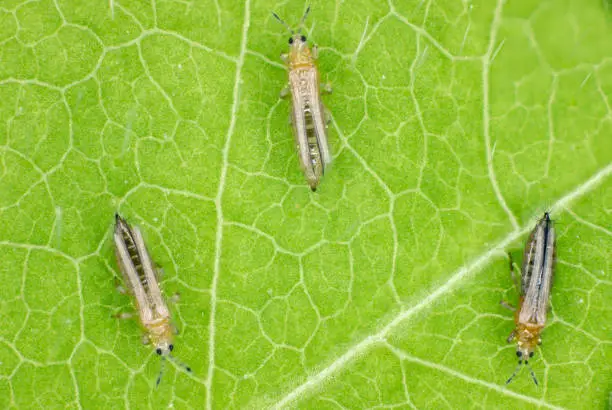
Drain flies
Size: About an eighth of an inch.
Shape: Small, slender body and broad, fuzzy wings.
Color: Drain flies are typically black/brown in color, with a light gray or tan body and lighter-colored wings.
Lifespan: Drain flies go through their life cycle in 1 to 3 weeks, with an average lifespan of about 2 weeks for the adults after emerging.
Drain flies, also known as moth flies or sewer flies, are small insects that are commonly found in homes.
They belong to the family Psychodidae and are characterized by their small, slender body and broad black bugs with wings.
They are typically about an eighth of an inch in size, with black/brown coloration, a light gray or tan body, and lighter-colored wings.
Drain flies go through their life cycle in 1 to 3 weeks, with an average lifespan of about 2 weeks for the adults after emerging.
Their habitat is typically moist areas, such as drains, sewers, and other standing water sources. They feed on organic material, such as decaying plant matter and sewage, which is why they are often found in and around drains.
Drain flies are attracted to homes with moisture and organic material, making them a common nuisance in bathrooms, kitchens, and basements.
Clogged drains, leaky pipes, and standing water are all potential breeding grounds for these insects.
Their activity in homes increases during the warmer months, particularly in the summer, when their reproduction is at its peak.
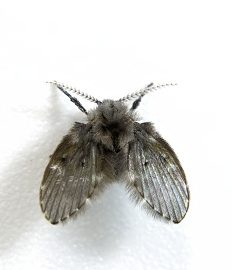
Weevils
Size: 3 mm to over 10 mm in length.
Shape: Characteristic shape that includes a prominent snout and small pointed processes towards the rear of each wing cover.
Color: Dark-colored, ranging from brownish to black, and may have distinct markings or spots on their wing covers.
Lifespan: 2 to 3 months.
Weevils are a type of beetle that is commonly found in homes, especially in areas where grains, cereals, and other stored foods are kept.
They range in size from 3 mm to over 10 mm in length and have a characteristic shape that includes a prominent snout and small pointed processes towards the rear of each wing cover.
They are typically dark-colored, ranging from brownish to black, and may have distinct markings or spots on their wing covers.
Weevils possess an average lifespan of 2 to 3 months and prefer warm, humid surroundings.
They eat a wide range of plant materials, such as grains, cereals, nuts, and seeds.
Weevils are attracted to the house by the presence of food sources and can enter through cracks and openings in doors and windows.
They are most active during the warmer months when the temperature and humidity levels are high.
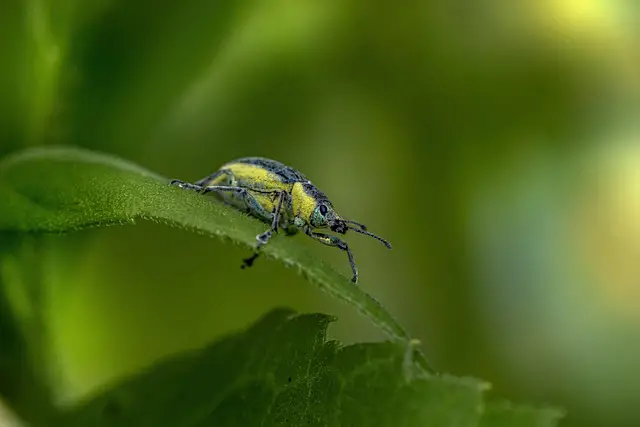
Earwigs
Size: Adults grow up to 1 inch in length.
Shape: Telescopic shape.
Color: Earwigs are typically brown to reddish-brown in color, with some species having lighter or darker hues.
Lifespan: The average earwig’s lifespan is about one year, although this can vary depending on environmental factors.
Earwigs are small insects that are commonly found in homes.
They belong to the order Dermaptera and are characterized by their elongated and flattened body shape, with pincers on the end of their abdomen.
Adults grow up to 1 inch in length and have a telescopic shape.
Earwigs are usually brown to reddish-brown in color, while some species have lighter or deeper tints.
A typical earwig has a one-year lifespan, though this might vary based on environmental variables.
Earwigs prefer moist settings and are frequently found in dark, damp areas such as basements, bathrooms, and kitchens.
They are also attracted to lights and may crawl into homes through cracks and openings.
Earwigs are omnivorous, which means they feed on both plants and insects. In homes, they may feed on crumbs or leftover food.
Earwigs are more active in the warmer months and may increase their activity in homes during the summer. They cause trouble but are harmless to humans.
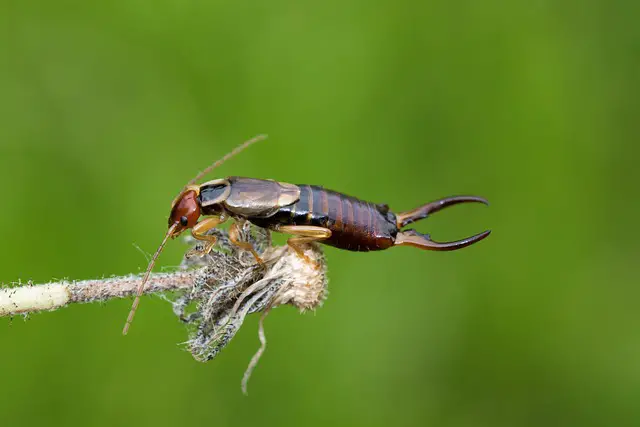
Centipedes
Size: The tiny ones are only a few millimeters long, while the longest can reach a length of a foot!
Shape: Flattened bodies with multiple segments.
Color: Many are brown or reddish-brown. Some may be yellow or greenish in color.
Centipedes are arthropods with flattened bodies and multiple segments.
They’re widespread in houses and range anywhere from a few millimeters to a foot.
They are brown, brownish-yellow, and greenish in color. The centipede lives for a few months to a few years.
Centipedes enjoy moist, dark environments and are common in attics, bathrooms, and underground spaces.
They eat insects, spiders, and other tiny arthropods during the night.
In homes, they may be attracted to cluttered areas, dampness, and humidity.
Centipede activity around homes typically rises during the spring and summer months when the climate is hotter and more humid.

Conclusion
In conclusion, dealing with skinny tiny bugs in your home can be a frustrating experience.
You may, however, lessen the possibility of an invasion by recognizing the sorts of bugs that you’ve been dealing with, as well as the risks that they bring, and taking steps to avoid them.
Remember to keep your home clean and free of clutter, seal up any entry points, and seek professional help if needed.
You may maintain your house bug-free while maintaining peace of mind with the appropriate strategy.
